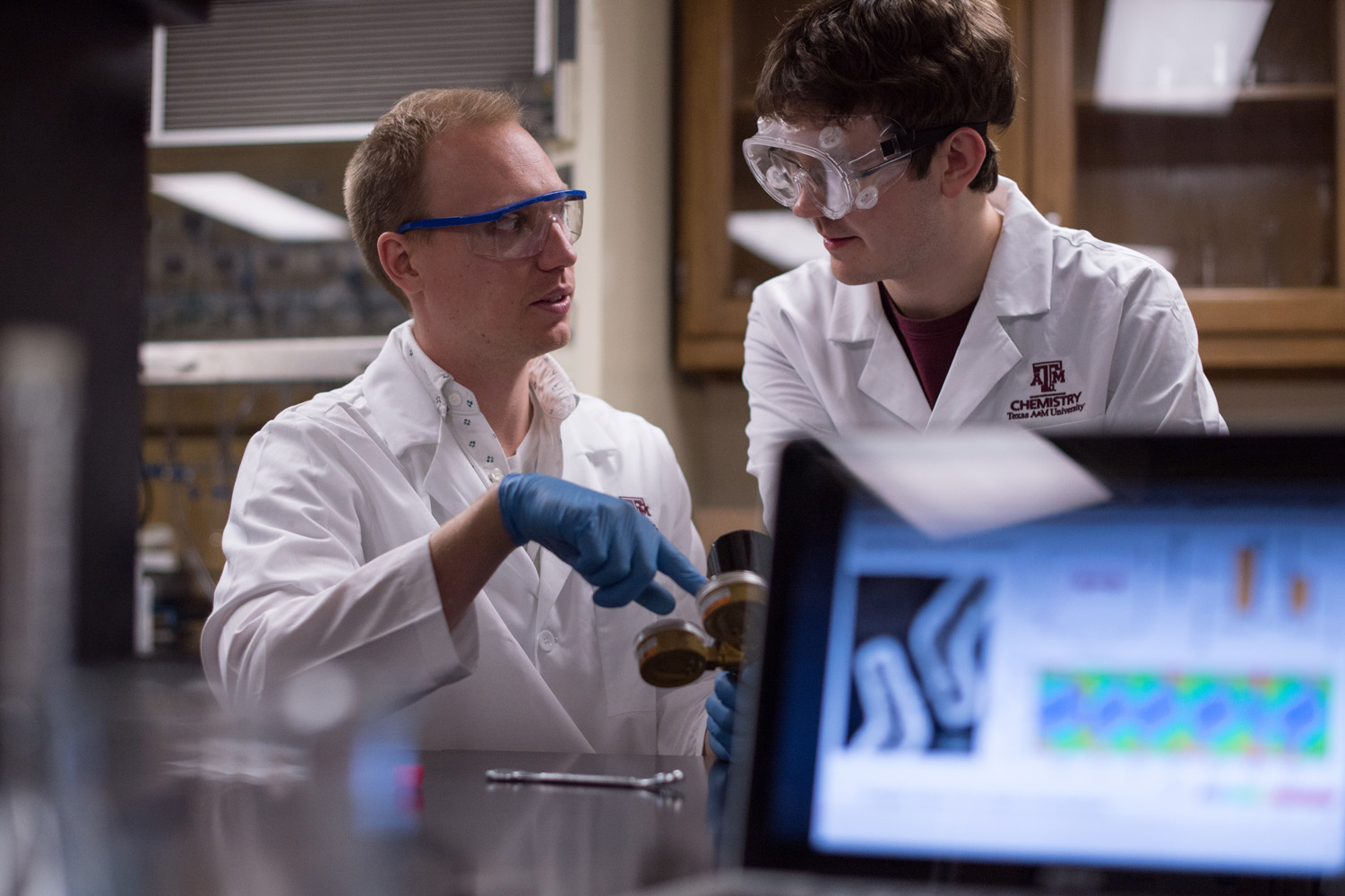Fundamentally, a solar cell can be thought of as an engine that converts sunlight into electricity. This process has many similarities to more familiar engines, like the steam engine in a locomotive, that convert high temperatures into other useful forms of work. Our research is learning how nanoscale optical devices, sometimes termed ‘nanophotonics,’ can optimize light-powered engines. The light energy, or photons, in a nanophotonic engine play a role analogous to steam in a steam engine, and deeper understanding allows us to improve the performance of solar cells or to achieve other more exotic behavior like optically driven refrigeration.

Dr. Matthew Sheldon, assistant professor of chemistry at Texas A&M University, has been selected as one of four inaugural recipients of the Early Career Award in Nanophotonics in recognition of work that has advanced the world’s fundamental understanding of photonics.
The annual award, recently established by the international journal Nanophotonics, is intended to celebrated outstanding experimental, theoretical and applied researchers who have demonstrated scientific excellence and significantly contributed to the scientific field of nanophotonics. Winners receive a monetary prize, an award certificate and free publishing in Nanophotonics for a two-year period.
Sheldon is cited “for significant contributions to various areas in nanophotonics, including solid-state optical cooling and plasmonic chemistry.”
Sheldon joined the Texas A&M Department of Chemistry faculty in 2014 and also is an affiliated faculty member in the Department of Materials Science and Engineering. He earned his Ph.D. in chemistry from the University of California-Berkeley in 2010 and was a postdoctoral fellow in applied physics at the California Institute of Technology prior to coming to Texas A&M, where his research centers on the use of nanomaterials for solar energy and related opportunities at the intersection of materials science, chemistry and nanophotonics.
In tandem with his research group, Sheldon is working to develop new types of optical structures for improving conversion efficiency in solar cells — technology capable of providing cost-effective global energy solutions for growing economies throughout the world. He notes this award recognizes recent advances developing nanoscale optical structures that can reach extremely high temperatures or, conversely, spontaneously decrease in temperature when exposed to light. He hopes both effects can be used to greatly improve the conversion efficiency of solar cells and help make cheap and sustainable solar energy available worldwide.
“Fundamentally, a solar cell can be thought of as an engine that converts sunlight into electricity,” Sheldon said. “This process has many similarities to more familiar engines, like the steam engine in a locomotive, that convert high temperatures into other useful forms of work. Our research is learning how nanoscale optical devices, sometimes termed ‘nanophotonics,’ can optimize light-powered engines. The light energy, or photons, in a nanophotonic engine play a role analogous to steam in a steam engine, and deeper understanding allows us to improve the performance of solar cells or to achieve other more exotic behavior like optically driven refrigeration.”
Sheldon’s previous honors include being named a Journal of Chemical Communications Emerging Investigator in 2018, one of five Moore Inventor Fellows in 2017, and an Air Force Office of Scientific Research Young Investigator in 2016. Most recently, he was elected to the Executive Committee of the American Physical Society Topical Group on Energy Research and Applications (GERA) in 2019.
For additional information about Sheldon’s research, visit http://www.chem.tamu.edu/rgroup/sheldon/.
# # # # # # # # # #
About Research at Texas A&M University: As one of the world’s leading research institutions, Texas A&M is at the forefront in making significant contributions to scholarship and discovery, including in science and technology. Research conducted at Texas A&M generated annual expenditures of more than $1.13 billion in fiscal year 2020 and ranked 14th in the National Science Foundation’s Higher Education Research and Development Survey. Texas A&M’s research creates new knowledge that provides basic, fundamental and applied contributions resulting, in many cases, in economic benefits to the state, nation and world. To learn more, visit Research@Texas A&M.

